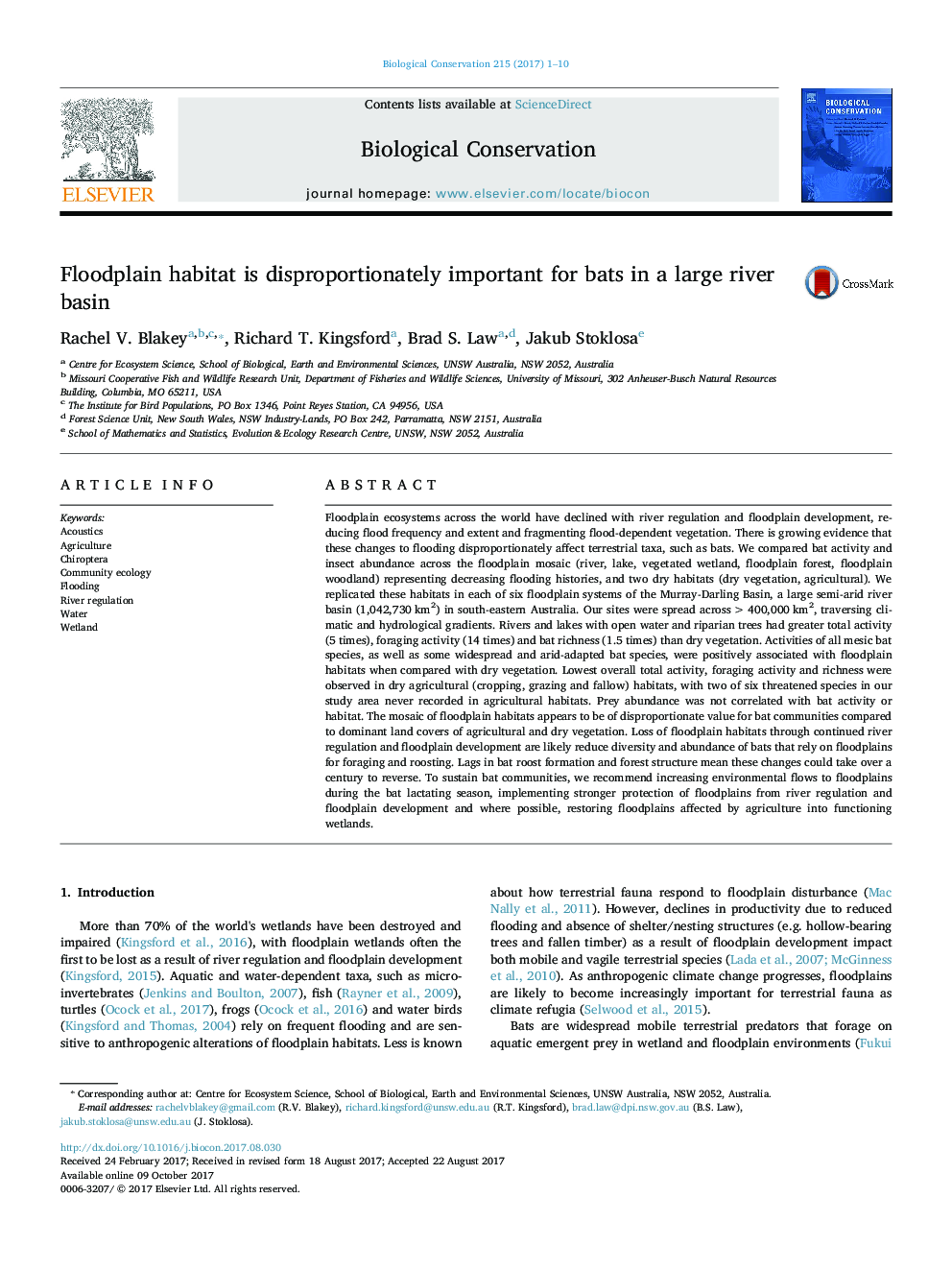| Article ID | Journal | Published Year | Pages | File Type |
|---|---|---|---|---|
| 5743016 | Biological Conservation | 2017 | 10 Pages |
â¢Across > 400,000 km2, bats used floodplain more than dry and agricultural habitats.â¢Total bat activity was 5 times greater in frequently flooded compared to dry sites.â¢Agricultural areas had lowest bat habitat use and richness.â¢9 out of 14 taxa (two threatened) were positively associated with floodplain habitats.â¢We recommend increasing environmental flows and protecting and restoring floodplains.
Floodplain ecosystems across the world have declined with river regulation and floodplain development, reducing flood frequency and extent and fragmenting flood-dependent vegetation. There is growing evidence that these changes to flooding disproportionately affect terrestrial taxa, such as bats. We compared bat activity and insect abundance across the floodplain mosaic (river, lake, vegetated wetland, floodplain forest, floodplain woodland) representing decreasing flooding histories, and two dry habitats (dry vegetation, agricultural). We replicated these habitats in each of six floodplain systems of the Murray-Darling Basin, a large semi-arid river basin (1,042,730Â km2) in south-eastern Australia. Our sites were spread across >Â 400,000Â km2, traversing climatic and hydrological gradients. Rivers and lakes with open water and riparian trees had greater total activity (5 times), foraging activity (14 times) and bat richness (1.5 times) than dry vegetation. Activities of all mesic bat species, as well as some widespread and arid-adapted bat species, were positively associated with floodplain habitats when compared with dry vegetation. Lowest overall total activity, foraging activity and richness were observed in dry agricultural (cropping, grazing and fallow) habitats, with two of six threatened species in our study area never recorded in agricultural habitats. Prey abundance was not correlated with bat activity or habitat. The mosaic of floodplain habitats appears to be of disproportionate value for bat communities compared to dominant land covers of agricultural and dry vegetation. Loss of floodplain habitats through continued river regulation and floodplain development are likely reduce diversity and abundance of bats that rely on floodplains for foraging and roosting. Lags in bat roost formation and forest structure mean these changes could take over a century to reverse. To sustain bat communities, we recommend increasing environmental flows to floodplains during the bat lactating season, implementing stronger protection of floodplains from river regulation and floodplain development and where possible, restoring floodplains affected by agriculture into functioning wetlands.
